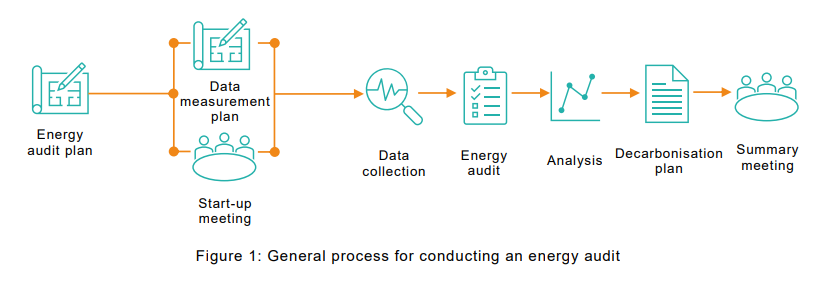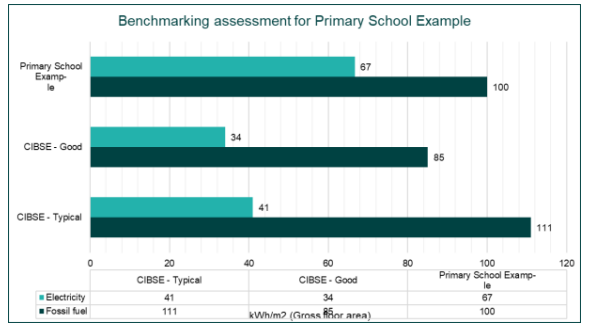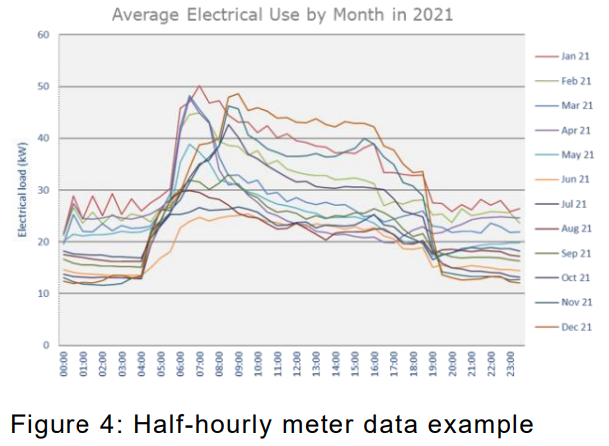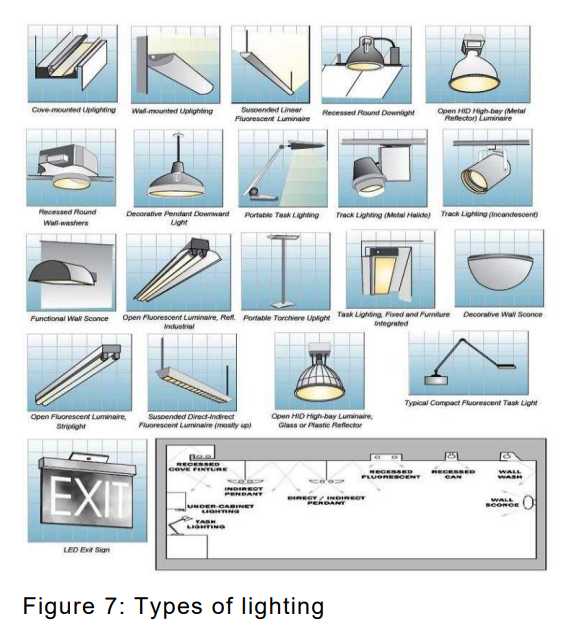This guide sets out to offer a better understanding of how to undertake an energy audit. This guide has been developed as part of the North-East and Yorkshire Net Zero Hub’s Public Sector Estate Decarbonisation programme.
This guide sets out to offer a better understanding of how to undertake an energy audit. This guide has been developed as part of the North-East and Yorkshire Net Zero Hub’s Public Sector Estate Decarbonisation programme.
Turner & Townsend are working with the Hub to deliver a suite of training programmes and guides to build capacity and upskill the public sector to deliver decarbonisation projects in their buildings.
What is energy auditing?
An energy audit is used to understand how energy is being used on site, to identify how energy use can be optimised without compromising day to-day operations, and to assess how carbon emissions can be reduced on site.
Conducting an audit
This section covers what to consider when conducting an energy audit. When planning your energy audit, think about:
- What information do you already have about your building?
- What information will you need to collect and how?
- Who are the people you will need to liaise with (for example, IT colleagues) to get the full picture of your building’s energy consumption?
- Do you have access to all of the areas you will need to survey (for example rooftops)? Document all of your calculation methodologies and assumptions made in your assessment.
- Can you link up any identified measures with planned maintenance regimes?
- Who is the audience for your report (e.g. senior staff looking to sign off a programme of work)?
Figure 1 below provides an indicative process for carrying out an energy audit. This process may change depending on your site-specific circumstance, your intended outcomes, and audiences.

Planning your audit
Review of existing information
Before auditing a site, the auditor must collect as much useful information as possible, and review it, as it can often guide what measures are more appropriate, and highlight issues that can be investigated further on site.
It is recommended that you use an energy audit data collection form/sheet which entails, but is not limited to, the following information:
- Building name
- Gross internal floor area (m2)
- Main heating fuel (e.g. natural gas)
- Consumption data (e.g. half-hourly).
All information collected is used to evaluate the different uses of energy within the process and to establish a breakdown of the energy consumed.
Benchmarking
A helpful method to understand how your building is performing is to compare it to recognised benchmarks.
The Chartered Institute of Building Service Engineers (CIBSE) has developed the most comprehensive list of benchmarks in the UK in its Guide F. These benchmarks compare the electrical and thermal intensity of buildings (kWh/m2). CIBSE has developed an online benchmarking tool with up-to-date building benchmarks. An example graph showing a comparison between benchmarks and a public building is shown below, clearly showing the site is performing well both thermally and electrically.
Consumption data is sometimes difficult to find as some older buildings may have older analogue meters which require manual readings. However, digital half-hourly meters can automatically provide you with a building's consumption every half hour direct to the user to analyse. There is also an option to install additional submeters to provide granularity on consumption by service i.e. LED lighting, cooling, etc.

Projected below is the average energy consumption during the day (weekdays only) each month of 2021. This can be reviewed before attending a site to query if building operations require heating to come on between 04:00 – 07:00, as it could likely be pushed to a later time to reduce energy use making the building more energy efficient, as the building is generally not occupied until 06:30 at the earliest.

Typical information required for audits
As well as the information above, an energy audit will be simpler if the energy auditor has access to layout drawings and any asset registers. Additionally, greater understanding can be gained if auditing the site with an experienced person that knows the site well such as a building manager or janitor.
Concerns such as care areas or asbestos
Care must be taken when arranging an energy audit as the auditor may put themselves at risk of harmful areas. One key concern is asbestos as it is often present in older plantrooms, hence an up-to-date asbestos register should be received and reviewed before attending a site. Additionally, attention must be taken regarding what type of building is being audited as a healthcare building may have some areas with specific care areas; a defence building may have some classified areas; or schools with additional support needs may require additional security clearances.
Conducting the audit
Building fabric
The temperature of air will always try to equalise and therefore heat needs to be pumped in to match the heat that is escaping. Upgrading the building fabric of a building will decrease the heat loss of the building thus lowering the energy required to heat the building.
The building age can be a good representation of the building fabric as they are likely constructed to the fabric levels outlined in the standards available at the time of construction.
If the building is constructed from brick, you can also make an assumption on whether the building has cavity wall insulation, see Figure 5 below. As well as cavity wall insulation, a more intrusive but greater benefit option is to provide external wall insulation which provides an additional layer of fabric on the external façade of a building.
Another important part of the building fabric is any insulation that is installed in the roof space, internal wall, or false ceiling. The main opportunities are ensuring that floors, ceilings, and walls are insulated to good levels, and draughts are blocked wherever possible.
Finally, the level of glazing in the building should be reviewed to see if it can be upgraded to double or triple glazing. Some listed buildings may result is excessively expensive costs to keep in line with the status of the building however secondary glazing is another option that can be explored.
Heating, ventilation, and cooling
Heating can come in a variety of sources be it gas, oil, or biomass boilers, electric heating, split units, and a number of other methods, all requiring different infrastructure to supply heat to a space.
Cooling follows a similar pattern, typically from split units mounted externally, with varying types of emitters internally.
All buildings will have ventilation, whether it is a full mechanical ventilation system with air-handling units, or simple extraction fans. The key information that needs to be captured is set out below:
- Output of equipment
- Efficiency of equipment (referred to as the coefficient of performance (COP) for heat pumps)
- Age of heating equipment
- Time, temperature, and ventilation settings
- Any applicable ‘dead bands’ of heating and cooling (temperature range at which heating and cooling is allowed to be before firing)
- Infrastructure suitably insulated
Lighting
Lighting can come in a variety of different sizes and wattages, however the most common are fluorescent tubes. The greatest efficiency for lighting is to change to LED and reduce the operating hours through smart controls. Although difficult to determine the type of light fittings by eye, normally building managers will have spare fittings with all details.
As well as conventional lighting controls via switches, smart controls include passive infrared (PIR) sensors which turn lighting on when movement is detected, along with daylight control which can turn off lighting when natural daylight provides sufficient lux levels.

Renewable technology
In order to become more self-sufficient and ultimately Net Zero, some form of renewable generation would be required for the site. Renewable generation covers a variety of technology, the most common of which is solar generation but also includes tidal and wind power. Generally, tidal power will not be applicable for a building and wind turbines are unlikely to be applicable for any buildings in a city/town centre hence only solar is detailed further below. Sites should be reviewed with any potential for solar generation in mind, whether roof or ground mounted, looking for available space that is free from shading, etc.

